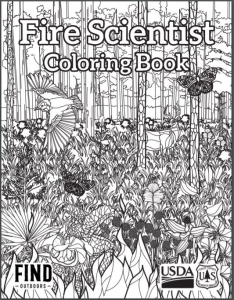Fire has historically been a natural part of southeastern forests. Native Americans used fire to manage their lands and lightning strikes sparked fires across this landscape. Today, controlled burns are used to restore longleaf back to it’s natural habitat and clear out much of the dense hardwoods.
Controlled burning is a technique used across the world for a variety of stewardship goals. Here in the longleaf pine forests, controlled burns are essential. These low-intensity burns mimic the natural fire regime that occurred naturally many years ago. Longleaf pine forests need fire to foster the open forest floor and clear way for their seeds to reach bare mineral soil. Many other plants and animals depend on fire to cultivate their ideal habitat.
Controlled burning is also known as prescribed fire. Each fire has a prescription – a plan that details the number of acres to be burned and the ecological goal. These plans are highly detailed – taking into account topography, weather, and particular species. Burn bosses create these plans – dividing forest into units that can be safely burned in a short period of time. These burns are also very weather dependent- wind direction, humidity, temperature & smoke lift are just some factors when considering a burn day. If the weather isn’t right, then a burn is a no-go.
Crews are well-trained and must pass tough requirements, getting tested along the way to earn and keep their credentials. The burn boss, who leads the burn, has many years of experience. These burn plans also detail what equipment is necessary to conduct the burn. Safety is always a top priority! Today, land stewards and forest managers practice controlled burning as a part of longleaf pine restoration and management.



